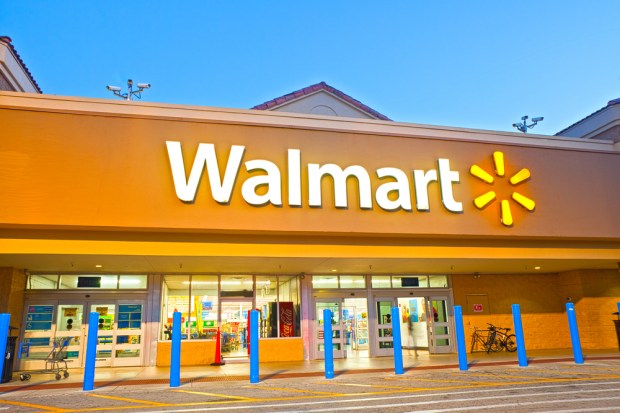Walmart Crushes Q3 Earnings By Crushing Digital

Walmart shareholders got an early holiday gift this year, in the form of a stock price that jumped 10 percent shortly after the market opened today. This came as the nation’s largest retailer by sales managed to notch solid beats across the board in revenue, comparable sales and eCommerce sales growth.
“We have momentum, and it’s encouraging to see customers responding to our store and eCommerce initiatives,” CEO Doug McMillon said in a statement “Existing customers have become advocates for popular initiatives like online grocery and free two-day shipping, and as a result, new customers, suppliers and partnerships are coming to Walmart.”
By The Numbers
Walmart’s same-store sales figure – the most watched number in any retail earnings report – was up 2.7 percent, excluding fuel, compared with an anticipated increase of 1.8 percent. The company’s eCommerce sales were up 50 percent during Q3, representing a big jump year over year, even though it fell short of the 60+ percent Walmart saw in Q2 and Q1 growth.
Earnings came in at $1.00 per share, slightly edging out forecasts of $0.97 cents per share. Revenue was $124 billion with net income of $1.75 billion, or 58 cents a share.
The average ticket at Walmart’s U.S. stores was up 1.2 percent, helped by the rapid growth of its food business. Walmart said its grocery categories delivered the strongest quarterly comparable sales performance in nearly six years, with fresh meat, bakery and produce topping the list.
Same-store sales at Sam’s Club, excluding fuel, climbed 2.8 percent in the fiscal third quarter, compared with an increase of 1.4 percent one year ago.
All of that good news prompted Walmart to revise its guidance for the year, in a direction that investors will appreciate. Adjusted earnings per share are now pegged at $4.38 to $4.46, up from $4.30 to $4.40 a share.
Other Points of Interest
Walmart CFO Brett Biggs told analysts that he expects future top-line growth to be fueled by eCommerce and same-store sales, “with less emphasis on new units in the U.S.”
Those new units and that eCommerce business were very much on the minds of analysts who asked, specifically about its newfound partnership with Lord &Taylor, grocery pick-up and its expanding brand profile.
On the Lord & Taylor front, analysts were curious about why it was a partnership and not an outright acquisition. Investor relations VP Steve Schmitt explained that a partnership allows Walmart to push out to a different customer base, with fairly low risk.
As far as groceries are concerned, Schmitt said that the option to order groceries online and pick them up curbside is about to be an option for a lot more people, in a thousand newly added locations.
“We know that’s working for our customers,” Schmitt noted. “We continue to expand it. We’re in 1,100 locations now and expect to add another 1,000 next year. So that’s a big initiative for us. It’s working and our customers love it.”
Customers, the Walmart team noted toward the end of their remarks, who are looking a good deal more like “a mirror image of the U.S. population in general.”
Serving them, they noted, is about keeping prices down and keeping options very much open. On the subject of low prices, investors did ask about Walmart’s recently announced differential between online and in-store prices, which could result in digitally located prices going up.
“So, if you think about our business, and certainly our DNA, we’re about offering everyday low prices, both in-store and online. The fact is, some products are just cheaper to sell in stores, think about items like bottled water, so you’ll see some price differences from time to- time,” said Schmitt.
Five Key Stats
70 million: The number of SKUs Walmart has on its eCommerce platform (up from 67 million last year)
13: The number of consecutive quarters Walmart has enjoyed same-store sales growth
1,000: The number of new grocery pick-up locations Walmart plans to open in 2018
3.9 percent: Walmart operating margins for the fiscal third quarter, down from 4.4 percent a year ago – the net result of heavy eCommerce investment and aggressive pricing tactics
1.2 percent: The average growth in basket size in Q3, with most of that uptick the result of growth in the grocery category
